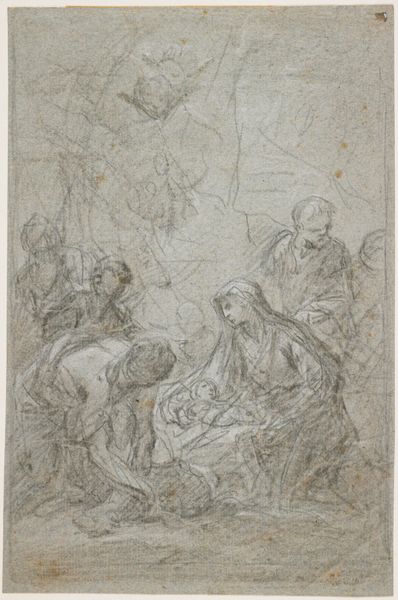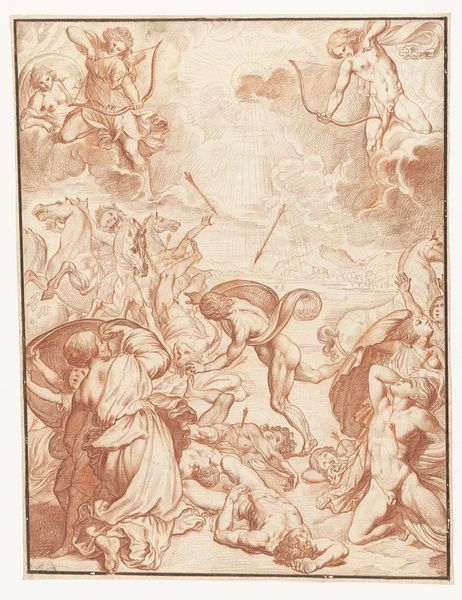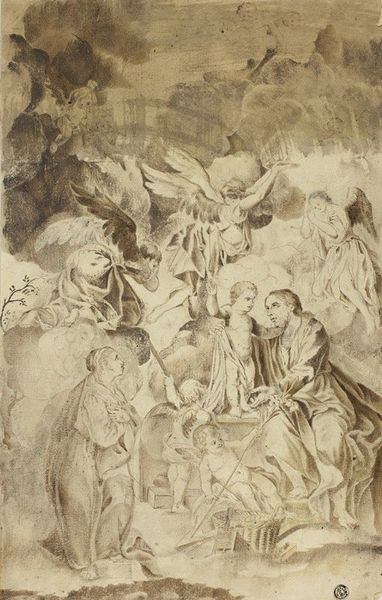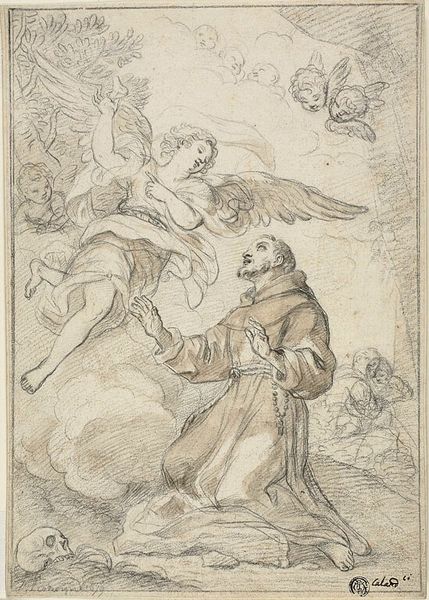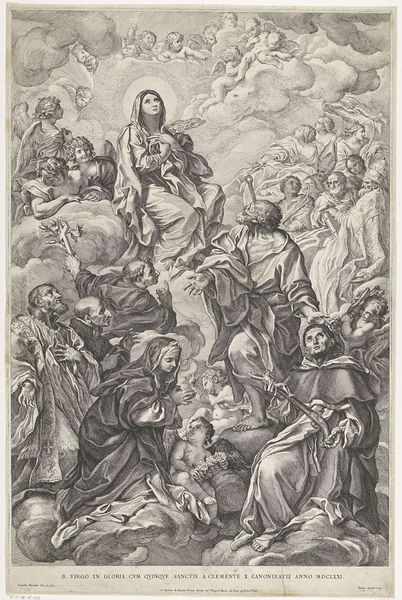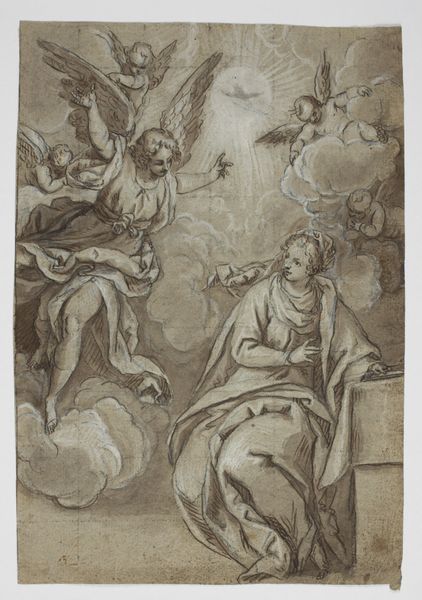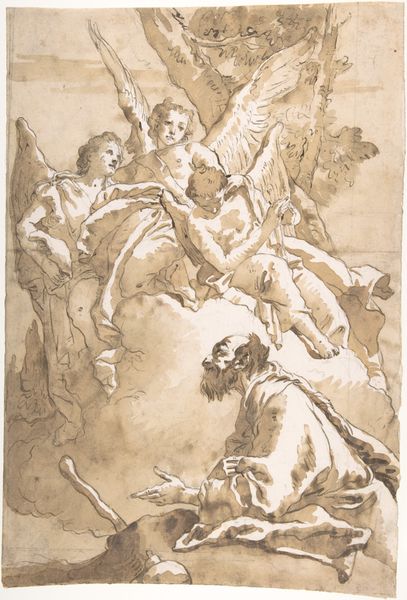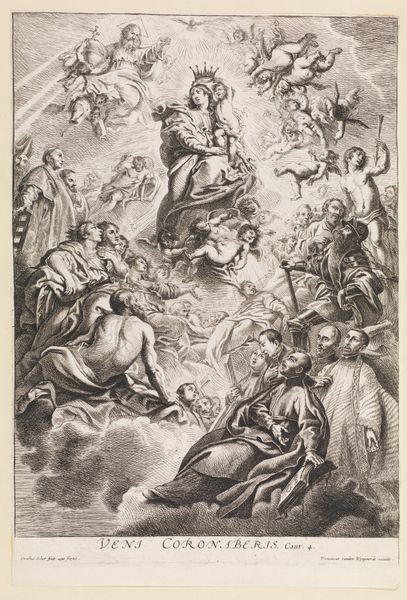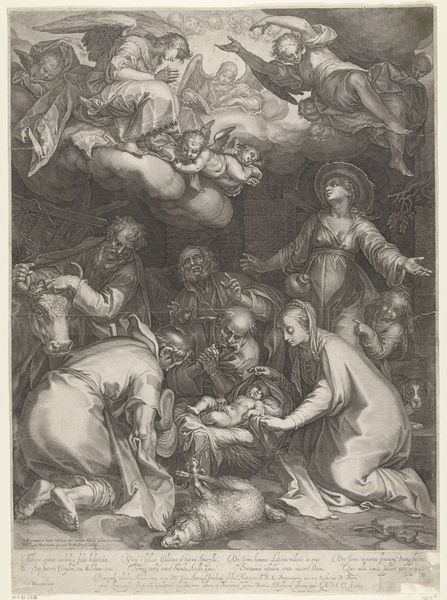
The Holy Family Appearing to St. Francis, St. Augustine, and St. Roch c. 18th century
0:00
0:00
drawing, watercolor, ink
#
drawing
#
baroque
#
figuration
#
watercolor
#
ink
#
history-painting
#
watercolor
Copyright: Public Domain: Artvee
Curator: The dreaminess of this work strikes me immediately – the figures seem to float, almost dissolving into the clouds around them. There's an ethereal quality, particularly in the faces of the holy figures. Editor: This is a drawing titled "The Holy Family Appearing to St. Francis, St. Augustine, and St. Roch," created by Charles-Joseph Natoire around the 18th century. It's rendered in ink and watercolor, a favored medium for preparatory sketches during that period. Notice how the artist uses washes to suggest volume and light. Curator: Yes, I'm struck by how much information he conveys with so few distinct strokes. It looks so effortlessly achieved, but it undoubtedly relies on precise control of the materials. Did Natoire have workshop assistants that may have helped with works of this scale? How does something like the availability of material and artisan talent drive pieces such as this? Editor: Natoire's prominence within the French academy certainly would have allowed access to workshop assistance. His art actively contributed to solidifying the Bourbon monarchy through symbolic representations, particularly prevalent during the reign of Louis XV. Drawings like this helped visualize and disseminate power. The way the composition positions the Holy Family above the saints clearly reinforces a hierarchy of the sacred. How did these religious works interact with an increasingly secular intellectual climate? Curator: Interesting! I wonder what an analysis of the specific pigments Natoire used here might reveal about contemporary trade routes and artistic consumption. What would that show in regard to the accessibility of colors in 18th-century France, or the material cost to produce art of this nature for his studio and the wider impact within France at the time? Editor: These questions speak to the evolving relationship between art and its patrons. As religious and aristocratic patronage began to wane, the art market became a more significant force. The subject matter and the style here—with its nods to baroque drama—suggest an attempt to retain the visual language of power amidst social change. Curator: Absolutely. Focusing on this drawing really highlights how social shifts and market economics shape the means and methods of art production. It shows how different elements intertwine and influence what an artist could create. Editor: Exactly, it's about understanding the intricate web of influences that determine what art gets made and seen by the public. This drawing provides just one thread in understanding broader patterns of cultural values and material conditions in France during the 1700s.
Comments
No comments
Be the first to comment and join the conversation on the ultimate creative platform.

